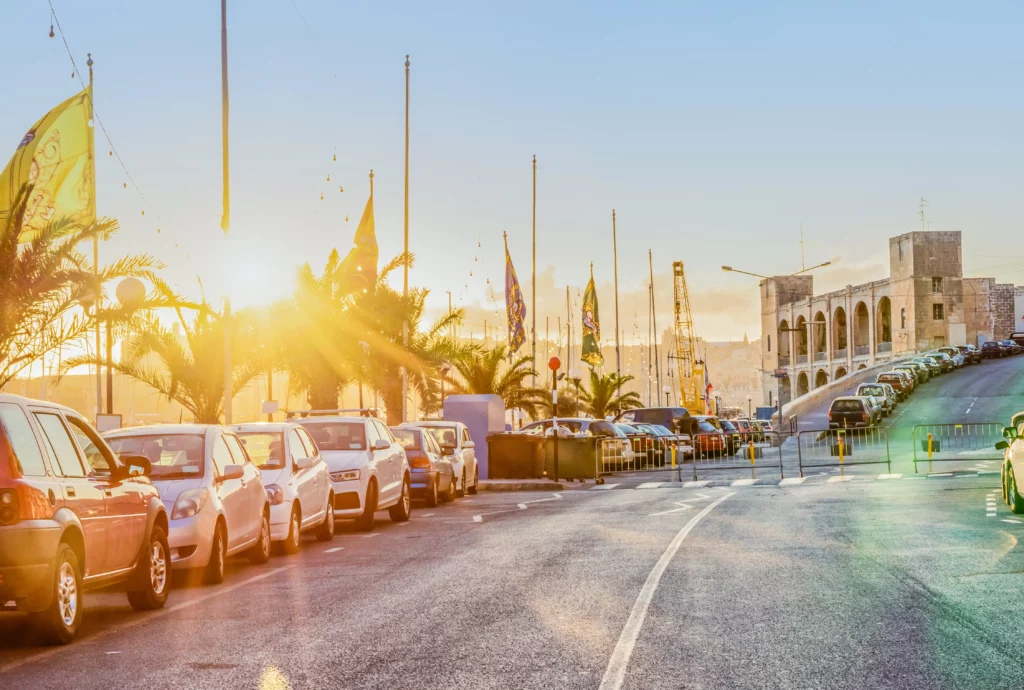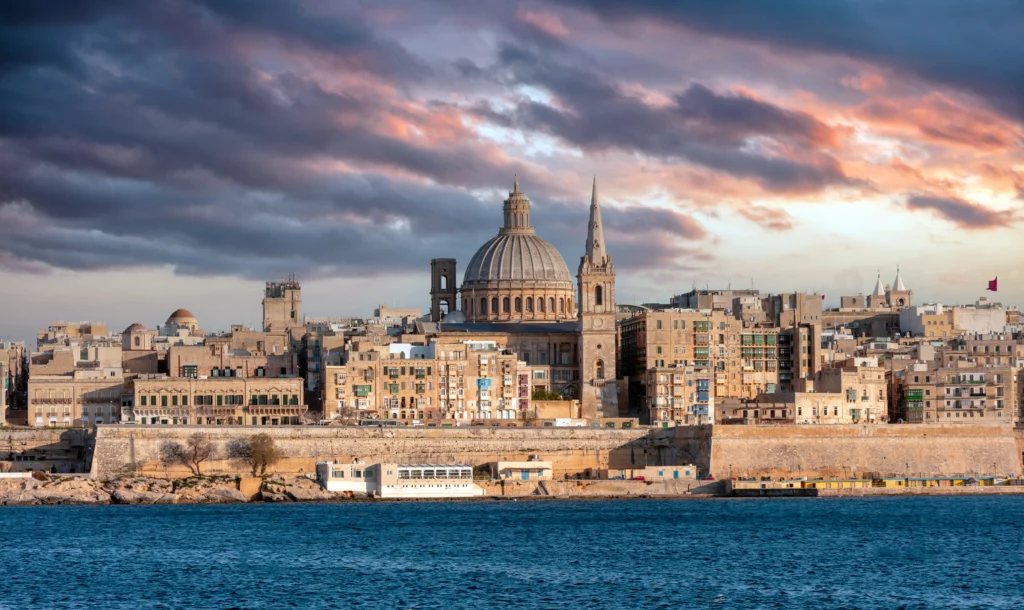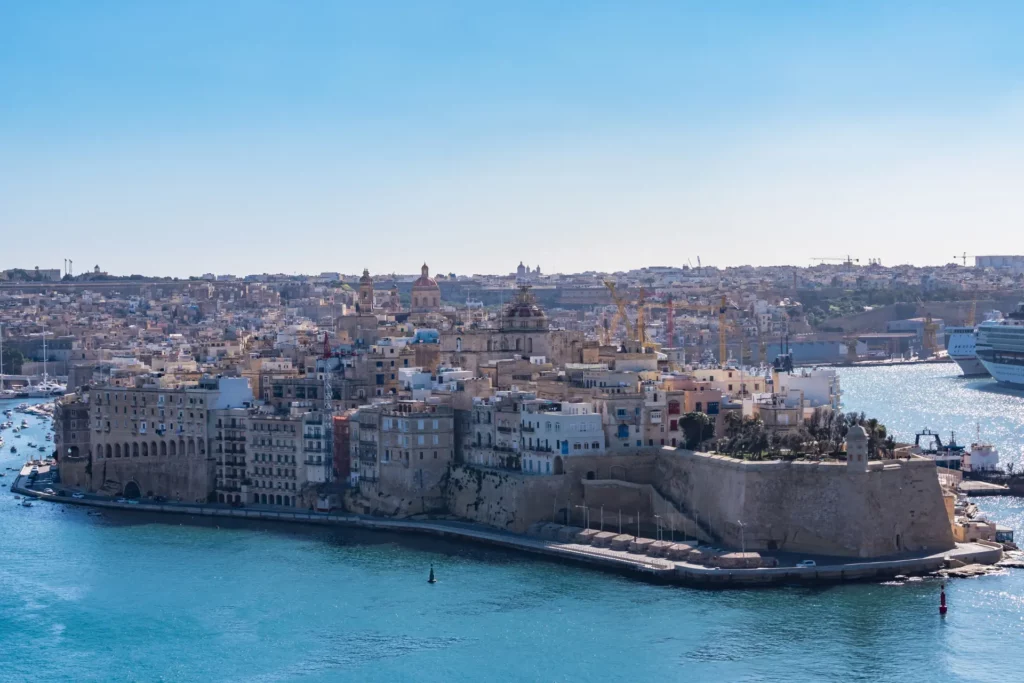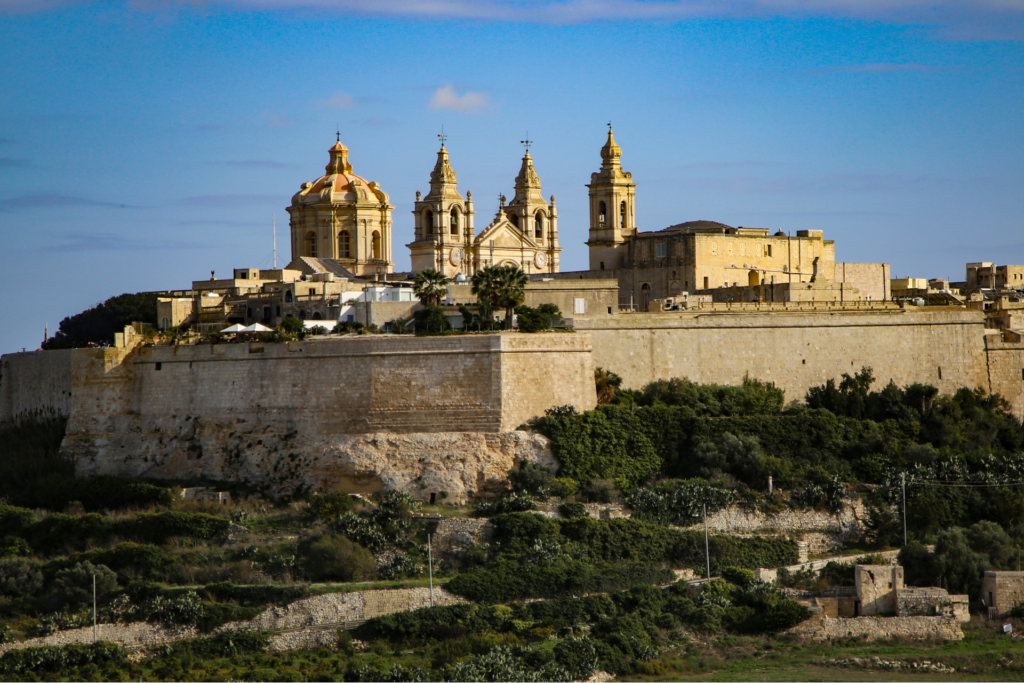Driving in Malta
Tips for the Road
- Malta follows the left hand driving system.
- Speed is measured in Kph
- When using roundabouts, you should always give priority to the right or cars that have already entered the roundabout.
- In Malta, you must wait for a green light before turning left, as left on red is not allowed.
- Headlights must be used at night and in poor visibility conditions.
- Using mobile phones without a hands-free system is strictly prohibited.

Road Types and Speed Limits
Speed Limit: Generally 80 km/h (50 mph), as Malta's motorways are not as extensive or high-speed as those in larger countries.
Characteristics: Connects major areas across the island and may have occasional speed cameras.
Speed Limit: Typically 60 km/h (37 mph), but specific limits apply depending on the road and area.
Characteristics: These are the primary roads for intercity travel, offering connections between towns and villages with some scenic routes.
Speed Limit: Usually ranges from 45 km/h (28 mph) to 55 km/h (34 mph), subject to local regulations.
Characteristics: Link smaller towns and residential areas, often narrower and more winding than main roads.
Speed Limit: Can vary, but generally around 40 km/h (25 mph) to 50 km/h (31 mph).
Characteristics: These roads provide access to farms and smaller villages, may have less maintenance and fewer amenities.
Speed Limit: Commonly 30 km/h (19 mph) to 50 km/h (31 mph) within town and city limits.
Characteristics: Urban streets accommodate local traffic, pedestrians, and residential access, with speed limits reflecting the density of the urban environment.
In the capital Valletta, there's a Controlled Vehicular Access (CVA) system to manage traffic. The first 30 minutes are free, and then it costs €0.82 for up to an hour, and €0.82 per hour after that, up to €6.52. The system doesn't charge after 2 p.m. on weekdays, and it's free on weekends and public holidays. This helps reduce traffic and makes the city more pleasant.
- Triq Aldo Moro (Aldo Moro Road): Located in Marsa, this is one of the busiest roads in Malta, serving as a major artery connecting various parts of the island, including access to Valletta.
- Triq Reġjonali (Regional Road): This important thoroughfare runs through central Malta, connecting towns and cities across the northern and southern parts of the island.
- Triq il-Kosta (Coast Road): Stretching along the northeastern coast of Malta, this road connects several coastal towns and is key for both local commuting and tourist travel.
- Triq L-Indipendenza (Independence Avenue): Serving as a main route in central Malta, this avenue is crucial for connecting various towns and localities to central areas.
Top City Destinations

Valetta
Valletta, the capital of Malta, is a baroque masterpiece with streets and buildings carved from glowing limestone. Roam the city and discover the street art that transforms its ancient walls into a modern canvas. For a rush of adrenaline, take a speedboat tour around the harbor, or delve underground to explore the wartime legacy at the Lascaris War Rooms.If you’re a foodie a must-try is the traditional pastizzi, flaky pastry pockets filled with ricotta, found at any local vendor. Experience the vibrant energy of Valletta’s street markets, and for a panoramic view, ride the elevator to the Upper Barrakka Gardens to witness the majestic sweep of the cityscape.
The Three Cities
Known as The Three Cities of Malta — Vittoriosa (Birgu), Senglea (L-Isla), and Cospicua (Bormla) — this trio of historic cities, nestled along the Grand Harbour opposite Valletta, offers a captivating exploration of Malta’s rich past and vibrant present. You can effortlessly stroll from one city to the next, soaking in the unique atmosphere of each. In Vittoriosa, check out Fort St. Angelo for a dose of history, or relax at a trendy waterfront cafe. Senglea’s Gardjola Gardens provide stunning panoramic views, ideal for enjoying the scenery. Meanwhile, Cospicua’s blend of old and new is a feast for the senses, with its historic Dockyard Creek alongside cool, contemporary hangouts. This easy walk through time lets you experience Malta’s historical depth and its modern-day charm in one go.


Mdina
Valletta, the capital of Malta, is a baroque masterpiece with streets and buildings carved from glowing limestone. Roam the city and discover the street art that transforms its ancient walls into a modern canvas. For a rush of adrenaline, take a speedboat tour around the harbor, or delve underground to explore the wartime legacy at the Lascaris War Rooms.If you’re a foodie a must-try is the traditional pastizzi, flaky pastry pockets filled with ricotta, found at any local vendor. Experience the vibrant energy of Valletta’s street markets, and for a panoramic view, ride the elevator to the Upper Barrakka Gardens to witness the majestic sweep of the cityscape.
